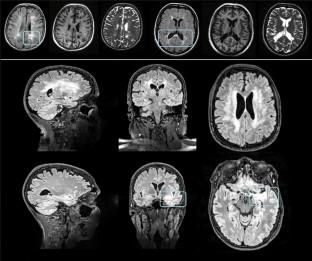The Journal of Supercomputing ( IF 3.3 ) Pub Date : 2024-04-04 , DOI: 10.1007/s11227-024-06080-2 Puranam Revanth Kumar , Rajesh Kumar Jha , P. Akhendra Kumar

|
White matter hyperintensities (WMH) are commonly found in the brains of healthy elderly individuals and have been associated with various neurological and geriatric disorders. Automatic WMH segmentation is essential for evaluating the natural disease course and the efficacy of clinical interventions, especially drug discovery. This work presents a hybrid method, which combines the novel metaheuristic Slime Mold Algorithm with the Harris Hawk's Optimization algorithm to train the Deep Convolutional Neural Network (DCNN) as a robust model to optimize the Kapur’s entropy for WMH segmentation. We named it as Slime Mold Harris Hawk's Optimization-based DCNN (SMHHO-DCNN). The proposed method was tested on the open WMH segmentation challenge MICCAI 2017 and in-house dataset. However, the WMH regions would appear blurry and globally inconsistent. In order to solve the fuzzy problem, we improved the network architecture by incorporating skip connections across the mirrored layers with in encoder and decoder stacks. As a result, the segmented WMH output appears more realistic and coherent with its surrounding contexts, which enables the hybrid attention module to further enhance the precision of WMH localization by extracting the supporting information of high-level characteristics and low-level features. As a result, that the proposed hybrid optimization, skip connections, has increased the segmentation performance of Dice score to 87.2%, precision 90.3%, recall 89.5%, and f1-score 88.8% for MRI dataset which is superior compared to other approaches. The proposed technique outperformed existing state-of-the-art methodologies in both qualitative and quantitative measurements across a wide range of medical modalities. Furthermore, the dataset contains T1-w, T2-w, and FLAIR images, demonstrating the adaptability and robustness of the model.
中文翻译:

脑高信号:使用改进的深度神经网络自动分割临床脑 MRI 图像中的白质高信号
白质高信号(WMH)常见于健康老年人的大脑中,并与各种神经系统和老年疾病相关。自动 WMH 分割对于评估自然病程和临床干预效果(尤其是药物发现)至关重要。这项工作提出了一种混合方法,将新颖的元启发式史莱姆霉菌算法与 Harris Hawk 优化算法相结合,将深度卷积神经网络 (DCNN) 训练为鲁棒模型,以优化 WMH 分割的 Kapur 熵。我们将其命名为 Slime Mold Harris Hawk's Optimization-based DCNN (SMHHO-DCNN)。所提出的方法在开放 WMH 分割挑战 MICCAI 2017 和内部数据集上进行了测试。然而,WMH 区域会显得模糊且全局不一致。为了解决模糊问题,我们通过在编码器和解码器堆栈中合并跨镜像层的跳跃连接来改进网络架构。因此,分段的 WMH 输出显得更加真实,与其周围的上下文更加一致,这使得混合注意力模块能够通过提取高层特征和低层特征的支持信息来进一步提高 WMH 定位的精度。因此,所提出的混合优化(跳过连接)将 MRI 数据集的 Dice 分数分割性能提高到 87.2%,精度提高到 90.3%,召回率提高到 89.5%,f1 分数提高到 88.8%,这比其他方法更优越。所提出的技术在各种医疗模式的定性和定量测量方面都优于现有的最先进的方法。此外,数据集包含T1-w、T2-w和FLAIR图像,证明了模型的适应性和鲁棒性。



























 京公网安备 11010802027423号
京公网安备 11010802027423号